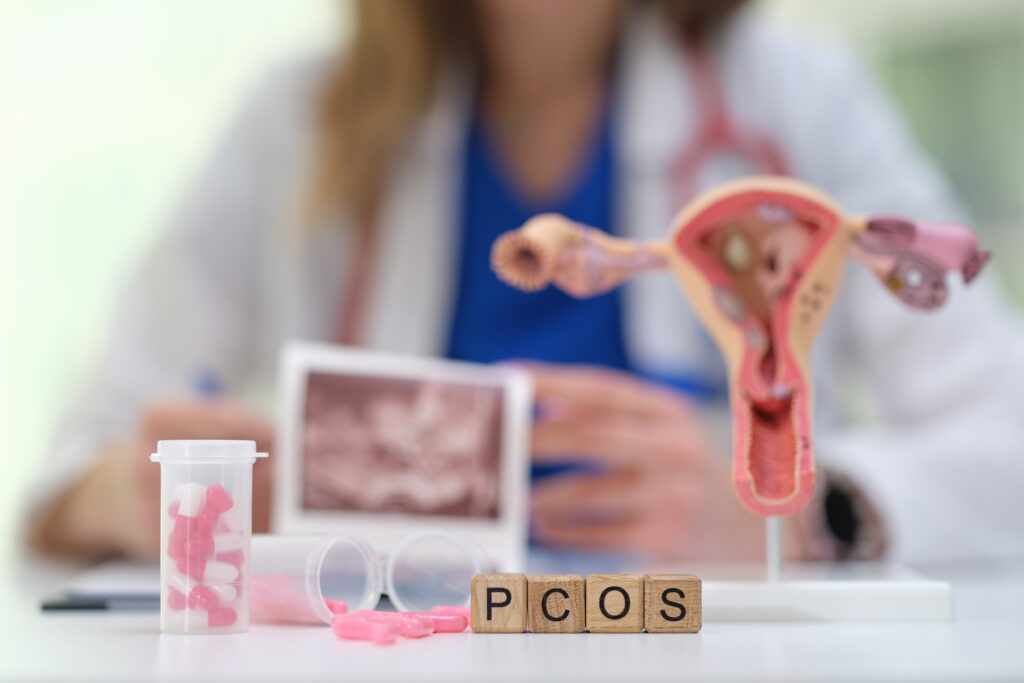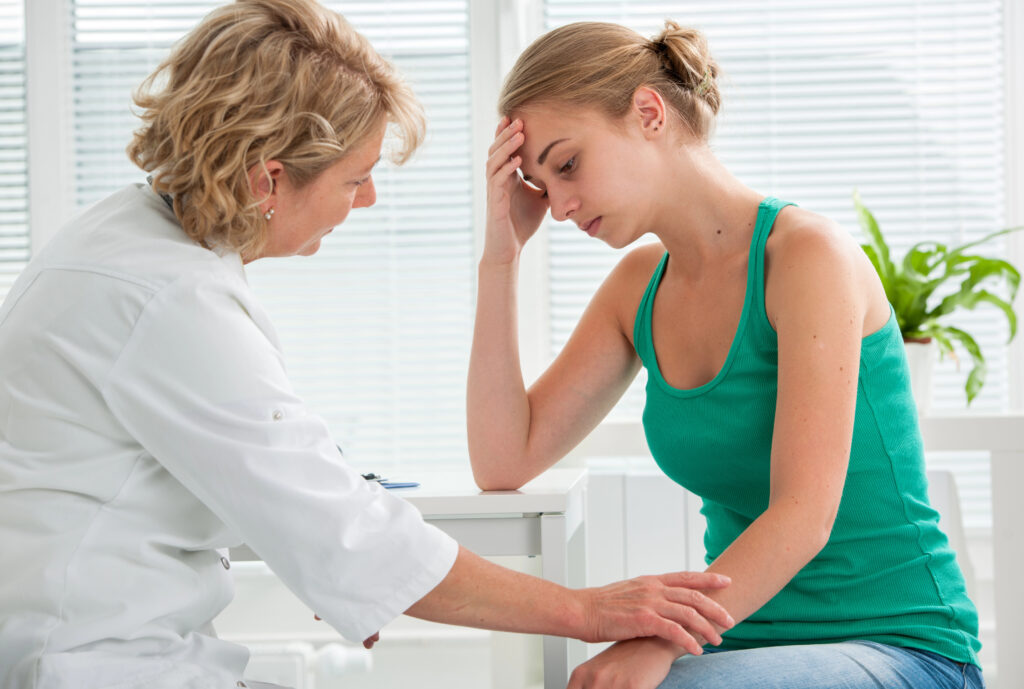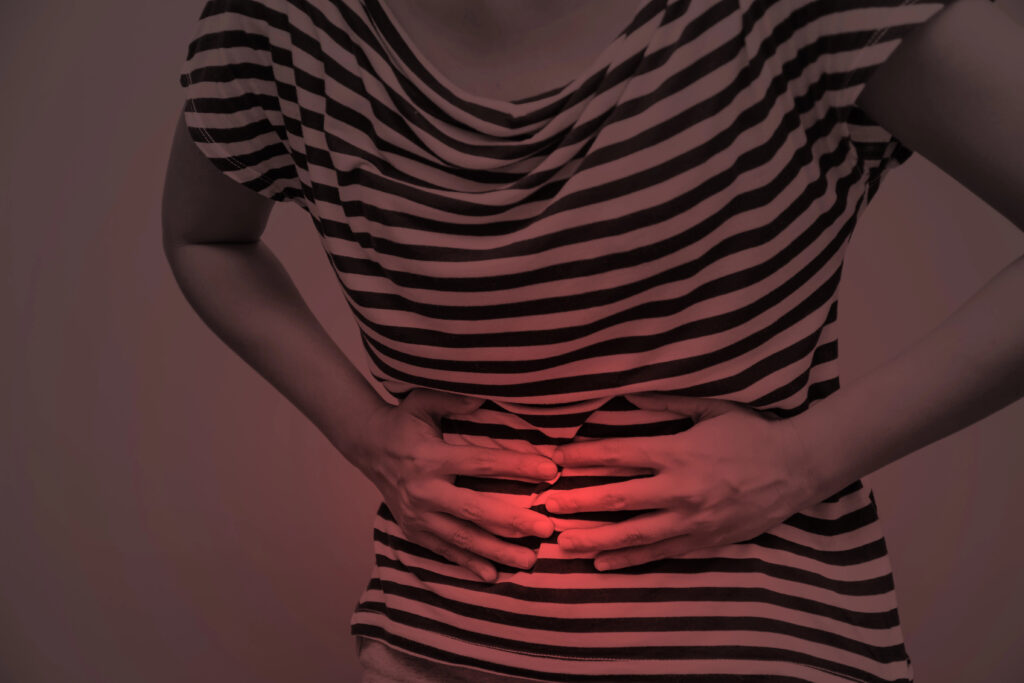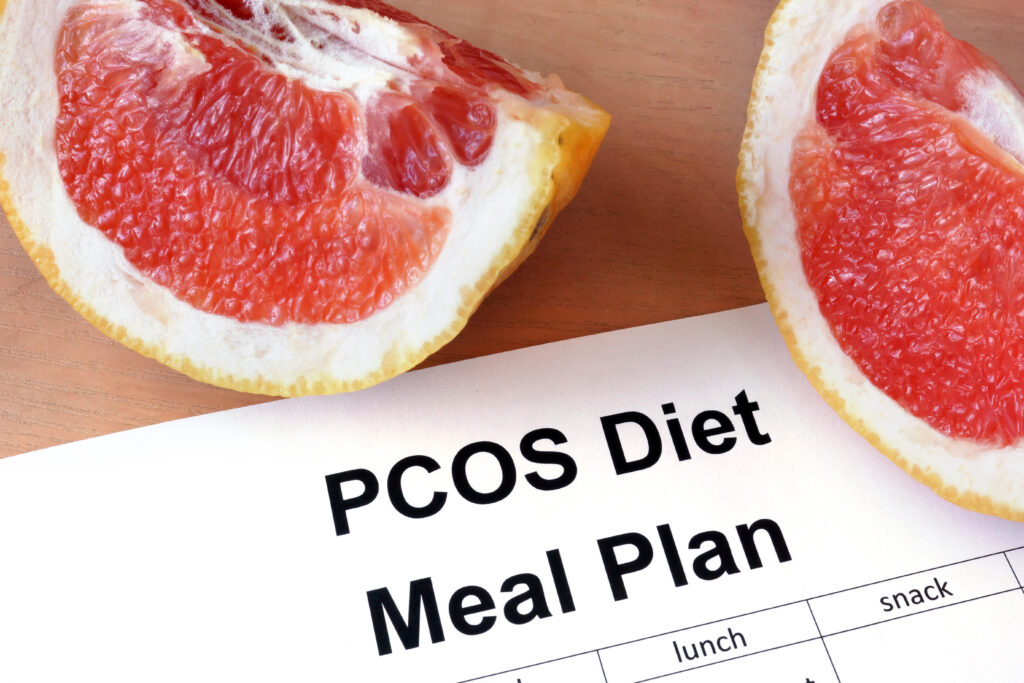
Polycystic Ovary Syndrome (PCOS) is a common hormonal disorder in teens, causing a range of physical and emotional symptoms. While it can be challenging, early diagnosis and proper management can significantly improve a teen’s quality of life and long-term health.
If you believe your teen may have the condition, I’ve outlined how PCOS is diagnosed and the PCOS symptoms in teens. I’ve also provided information on the type of support you can offer your teen to help them as they navigate this trying time in their lives.
PCOS Symptoms In Teens

Teens with PCOS often experience a variety of symptoms that can affect both their physical and emotional well-being. Irregular or absent periods are one of the most common signs, along with heavy or prolonged menstrual bleeding.
Excess hair growth, known as hirsutism, may appear on the face, chest, or back, while acne can persist despite typical treatments.
Weight gain or difficulty maintaining a healthy weight is another frequent issue.
Some teens may also notice thinning hair on the scalp or darkening skin in areas like the neck, armpits, or groin.
Mood changes, including anxiety and depression, are common, as are signs of insulin resistance, which can increase the risk of developing type 2 diabetes.
PCOS Causes And Risk Factors

The exact cause of PCOS isn’t fully understood, but genetics and insulin resistance certainly play significant roles. Teens with a family history of diabetes, obesity, or hormonal disorders may be at higher risk.
Insulin resistance, where the body doesn’t use insulin effectively, can lead to higher insulin levels, which may increase androgen production and worsen PCOS symptoms.
Other factors, such as inflammation and lifestyle habits, may also contribute.
Diagnosing PCOS In Teens

Diagnosing PCOS in teens can be challenging because some symptoms, like irregular periods, are common during puberty.
Doctors typically start by taking a detailed medical history and performing a physical exam to look for signs like excess hair growth or acne.
Blood tests are often used to measure hormone levels, including androgens and insulin.
In some cases, an ultrasound may be performed to check for ovarian cysts, though this isn’t always necessary for teens.
Treatment Options For PCOS In Teens

While there’s no cure for PCOS, the condition can be managed effectively with a combination of lifestyle changes, medications, and emotional support.
A healthy diet rich in fruits, vegetables, and whole grains, combined with regular physical activity, can help regulate menstrual cycles and improve insulin sensitivity.
- Medications: Hormonal birth control can regulate periods and reduce acne and excess hair growth. Metformin may improve insulin resistance, while anti-androgens like spironolactone can help manage symptoms.
- Weight Management: Even modest weight loss can significantly reduce symptoms and improve overall health.
For more on treatment options, this guide is an excellent resource.
Emotional And Mental Health Support For Teens With PCOS
Living with PCOS can be emotionally challenging for teens. Mood swings, anxiety, and depression are common, and body image issues may arise due to symptoms like weight gain or excess hair. Eating disorders are also a concern for some teens with PCOS.
Counseling or therapy can provide much-needed support, and connecting with others through support groups can help teens feel less alone. Parents can play a key role by offering understanding and encouragement.
Fertility And Menstrual Health
PCOS often leads to irregular menstrual cycles or even periods that stop entirely. This can cause concerns about future fertility, but early diagnosis and treatment can help manage these issues. Teens and parents should know that while PCOS can affect fertility, consistent management can significantly improve outcomes.
Exercise Recommendations For Teens With PCOS

Regular physical activity is one of the most effective ways to manage PCOS symptoms. Moderate-intensity exercise, such as brisk walking, swimming, or cycling, for at least 30 minutes a day, five days a week, can help regulate menstrual cycles, improve insulin sensitivity, and support weight management.
- Examples: Yoga, dancing, or team sports can also be enjoyable ways to stay active.
- Benefits: Exercise improves physical health, boosts mood, and reduces stress.
Importance Of Early Intervention For PCOS In Teens
Early diagnosis and management of PCOS can significantly improve long-term outcomes and reduce risks of complications like type 2 diabetes, heart disease, and infertility.
Regular follow-up appointments with a healthcare provider are essential to monitor symptoms, adjust treatments, and screen for potential health issues.
This PCOS guide provides details for a comprehensive look at long-term management.
Specialized Programs And Resources
Many hospitals and clinics offer specialized PCOS programs for teens, focusing on a holistic approach to care. These programs often include medical treatment, nutritional counseling, and mental health support.
For example, Children’s Health and CHLA provide tailored care for adolescents with PCOS.
Actionable Tips For Parents

Parents can support their teens by actively engaging in treatment plans, fostering healthy lifestyle choices at home, and regularly communicating with healthcare providers.
Scheduling an early consultation with an endocrinologist can also be beneficial.
- Encourage Healthy Habits: Promote a balanced diet and regular physical activity.
- Provide Emotional Support: Be understanding and patient, and consider counseling or therapy if needed.
By understanding the symptoms of PCOS in teens, seeking timely diagnosis, and exploring treatment options, teens with PCOS and their families can take proactive steps to manage the condition effectively.
The information provided is for educational purposes only. It should not be a replacement for medical care or advice. This info is not intended to diagnose or replace medical treatment. Consult your doctor if you have any questions about PCOS in teens. If your teen is experiencing an emergency, contact 911 or transport them to the nearest emergency room.
